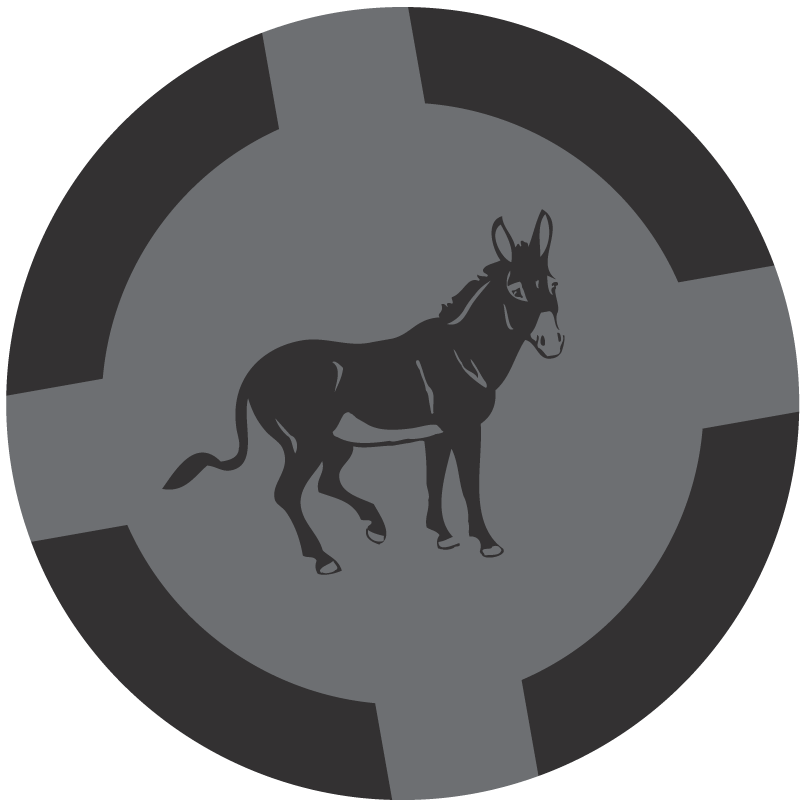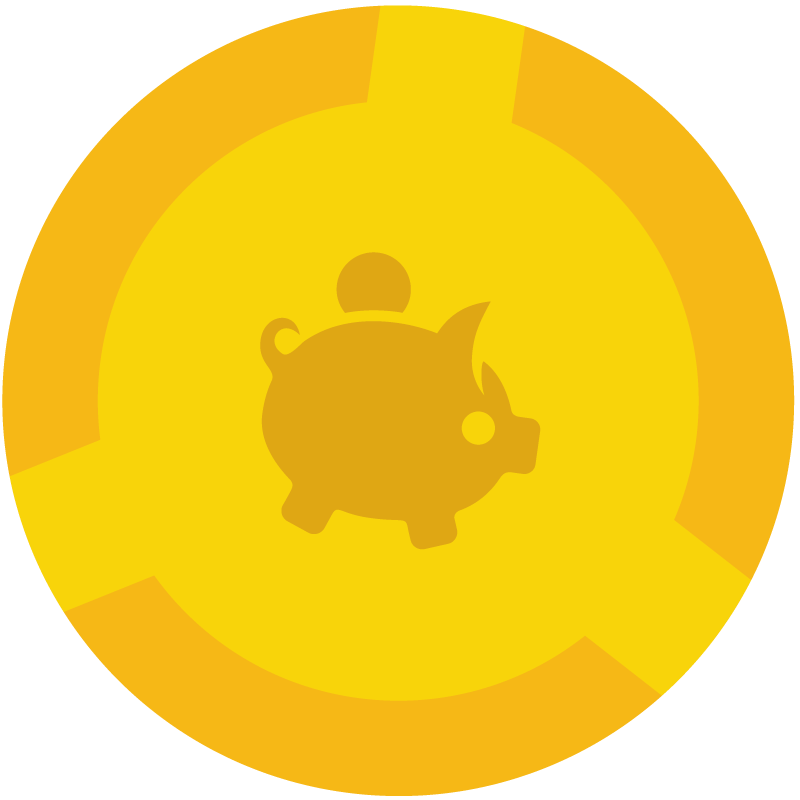Although we look at poker mostly from the perspective of an aggressor (because aggression is important), there are situations when we find ourselves on the other side of the fence and have to play as a passive cold caller. This article discusses how to approach these situations and make the best out of them despite of the lack of initiative.
Much of our focus

is often given to situations where we are the aggressor and have the initiative. Situations where we defend passively preflop can sometimes get overlooked. In this article we will discuss the basic concepts required for successful defense as the cold-caller.
Default Ranges
For starters we should have a decent understanding of what our default cold-calling range is from every position and versus every position. Some players claim that they do not need this because they are playing “exploitatively”.
This approach can result in a measure of success but will not be as strong as it potentially could be if we had default ranges in place. In order to have a strong exploitative
poker strategy we need to understand where we are deviating from in the first place.
We might decide we will defend exploitatively wide vs a certain player whom we have a postflop read on. Or at least....we might think we are defending wide. It turns out that the hand should have been a default cold-call anyway. If we'd had our default cold-calling ranges in place, our exploitative strategy would have been even more effective since we'd have felt comfortable pushing our defending ranges wider.
There are certain
equity calculators out there that can be used to store hand ranges. The first task before reading the rest of the article is to start creating these for ourselves. Alternatively we can import them from a trusted coach or friend – but ultimately we still have to agree with the ranges ourselves rather than blindly trusting something we have been given by someone else.
If we'd had our default cold-calling ranges in place, our exploitative strategy would have been even more effective since we'd have felt comfortable pushing our defending ranges wider.
Exploitative Defense – The Grey Area
So now that we have our default ranges in place we can start to think about situations where we'd like to deviate from them as an exploitative measure.
As a really rough guide there are two main types of opponent which are somewhat easy to exploit. Most other players fall somewhere between and create what we can refer to as a grey-area where postflop defense after cold-calling may be problematic.
The 2 types of opponent are these:
- Category a) Those who will give us good implied odds to make a hand.
- Category b) Those who will give up postflop.
Then the 3rd category
- Category c) Grey area, more balanced approach.
These are naturally very broad categories, and poker is far more complicated than sorting our opponents into three categories like this. But the general idea in terms of range expansion preflop is this.
Category A: We can expand our calling range with speculative hands. We don't generally need to worry so much about playing back postflop. When we hit, we'll probably end up getting paid off. We can resort to playing a fit-or-fold type strategy and hope to stack our opponent. There are a number of situations where we beneift from increased
implied odds including
- Deep stacks
- Opponent is a calling station
- Opponent is hyper aggressive and will bluff everything
Category B: These are the type of guys that fold a lot postflop. Perhaps they fold to bluff-raises when they are cbetting. Perhaps they check/fold a ton when they skip their cbet. Either way they are giving up a little bit too much postflop. This allows us to call wider preflop in an attempt to exploit the additional
fold-equity we have.
Category C: These guys are taking a slightly more balanced approach. We are not completely sure whether we should tend more towards making hands or tend towards trying to take down a decent amount of pots with a bluff. Against players in this category we will typically be defending our default cold-calling range and not much wider.
Bet-Sizing, Position
Regarding default

cold-calling ranges it's important to keep in mind a couple of important factors that are overlooked.
The first is sizing. In particular the
bet sizing used by the open-raiser. Generally speaking, the smaller our opponent's open-raise the wider our default defending range should be. It is important to keep this in mind when designing our default ranges. We need to specify which open-raise sizing we are facing when creating the range. We should also make some estimates on how we should expand or tighten our range based on a changing bet-sizing from our opponent.
The second is position. We are talking about something other than simply the position of the opener and our position. We are focusing on the other players at the table. Assuming there are aggressive guys to act behind us we might decide to tighten up our cold-calling range and even
slowplay some premiums. Assuming there are weaker players to act behind us we might decide to expand our cold-calling range.
Sometimes players may decide to call exploitatively wide in MP vs a huge fish UTG and forget that there are 4 other players still left to act. Even if the hand would be a clearly profitable cold-call if we were guaranteed to get into a heads-up pot vs the fish, we have to tighten our cold-calling range as a result of the other players still left to act behind us.
Facing a Cbet
So we have cold-called IP BTN vs CO and are now facing a cbet. How should we respond in this situation?
Let's start by listing the most common leaks.
- Folding too much to cbets
- Not raising enough vs cbets
Facing a cbet in position we should be striving to fold less than 40% of the time. Most regs, even winning regs end up folding more than this: anywhere between 40-60%. Anything above 60% is highly exploitable and starts to become a critical leak.
The general idea is that to play effectively as the cold-caller we need to find ways to defend on the flop. Keep in mind that this is just a statement made on average; against
category A type players we should potentially be folding most of the time to flop cbets. This will naturally make our fold-to-flop-cbet stat suboptimal, but this is simply an exploitative measure against an opponent who will not be folding often, perhaps because he has a strong range..
The general idea is that to play effectively as the cold-caller we need to find ways to defend on the flop.
There are two ways of lowering our fold-to-cbet-stat. Floating, and raising.
Float or Raise?
The decision to float or raise will be based on 3 main things. The board texture, our hand, opponent's stats.
Board Texture – We are looking here to see if the board texture is dry or drawy. On bone dry textures such as Q72r, we don't need any raising range whatsoever. It's certainly possible to balance a raising range here, so raising in itself does not cause any problems. The main issue occurs when we flat-call. If we raise anything half-decent on this texture for value, our flatting range will start to become very weak.
An observant opponent can exploit this. Since we have relatively few strong hands and many weak ones on a dry texture, we should use the stronger hands in our calling range to help protect the weaker ones. We are not saying that we can't bluff on a dry texture, we simply should delay our bluff until a later street in most cases. So we might
float the flop IP and then bet the turn if our opponent checks. Alternatively we might consider bluff-raising vs our opponent when he fires his second barrel, or even double-float with the intention of taking down the pot on the river.
Once again our turn line will be influenced by the board texture. Assuming after we float the flop the turn card comes extremely dry we should continue our strategy of not having a raising range in most cases. If the turn card puts some draws out there then we can make the decision whether to raise or call when facing a double-barrel.
If the flop texture is drawy this does not mean that we have to raise every time when facing our opponent's cbet. It means that we will have both a raising range and a calling range. Whether we choose to raise or call will be influenced by the type of hand we have and our opponent's stats.
Our Hand – Naturally our hand should influence our decision. In most cases we won't be continuing with
garbage hands on the flop unless we have a specific read on our opponents. We don't necessarily need a super strong premium to continue either. Any hand with good potential can be considered – poker is more about winning pots than it is making hands. Anything in the following categories can be considered:
- Backdoor Flush-draw
- Gutshot (with or without backdoor flush-draw)
- Overcards + backdoor straight or backdoor-flush (or both)
- Bottom pair (with or without backdoor draws)
- Nut no-pair (with or without backdoor draws)
*The strongest possible high-cards without holding a pair are referred to as the “nut no-pair” for example AQ on K72r board
Usually we need

a specific reason to fold any of the hands in this category, but there are exceptions. Any time we our floating the flop with some type of
backdoor draw it's preferable that our draw is either the nuts or very close to it. Floating the flop with something like a 3-high backdoor flushdraw can be problematic on later streets. We actually suffer from some
reverse-implied-odds, because if we hit and all the money goes in we will often be behind.
So we shouldn't feel we have to defend any back-door draw regardless of it's strength. In particular we prefer to defend backdoors that have the potential to make a strong 5-card hand by the river. Dominated backdoor draws we can consider giving up on the flop.
Opponents Stats – The best decision in any NLHE situation is going to be the one that takes advantage of our opponent's tendencies. Earlier we mentioned that we should avoid bluff-raising on dry textures. When we say this we are only talking about default situations vs unknowns however. If we know our opponent has a huge leak where he folds 75% of his flop cbets to a raise, we should be attempting to exploit this regardless of the texture.
Also of note are our opponents turn stats since these will have an influence on how wide we should be defending on the flop in the first place. If we decide to float our opponent on the flop we should be aware of how frequently he is going to
barrel the turn. If we see his turn barrel is low we'd then be interested in seeing how much he folds after he skips his turn cbet OOP. If this stat is high then we likely have a very profitable floating opportunity on the flop and can consider expanding our floating range as an exploit. There are some opponents against whom it may be possible to float any 2 cards regardless of our backdoor potential because they are giving up way to frequently on the turn.
If we see our opponent has a high turn barrel stat then we still might have a profitable flop-floating opportunity. We could check to see if our opponent frequently folds his turn cbet to a raise. If we find that our opponent barrels aggressively on all streets and does not fold to raises we might exploitatively decide to tighten up our flop floating range. Our weaker flop floats are simply going to be donating money to our opponent when we have to fold after he aggressively barrels, so it makes sense to simply remove these from our range. Against such an opponent we can assume that we have excellent implied-odds and play a more fit-or-fold strategy on the flop.
If we want to bluff-raise the flop its helpful if our opponent has a fold-cbet-to-raise of over 55%. By the time this stat reaches 70% we should be bluff-raising recklessly regardless of the board texture. A low fold-cbet-to-raise stat does not necessarily mean we cant bluff though. We should check our opponents fold-to-turn-after-bet/call-flop. We might find that even if our opponent does not fold to flop raises he may be folding very frequently on the turn when we barrel.
If you are one of PokerVIP members from the USA, although your options are somewhat limited, you should test
www.carbonpoker.ag for online poker action available around the clock.
 is often given to situations where we are the aggressor and have the initiative. Situations where we defend passively preflop can sometimes get overlooked. In this article we will discuss the basic concepts required for successful defense as the cold-caller.
is often given to situations where we are the aggressor and have the initiative. Situations where we defend passively preflop can sometimes get overlooked. In this article we will discuss the basic concepts required for successful defense as the cold-caller. cold-calling ranges it's important to keep in mind a couple of important factors that are overlooked.
cold-calling ranges it's important to keep in mind a couple of important factors that are overlooked. a specific reason to fold any of the hands in this category, but there are exceptions. Any time we our floating the flop with some type of backdoor draw it's preferable that our draw is either the nuts or very close to it. Floating the flop with something like a 3-high backdoor flushdraw can be problematic on later streets. We actually suffer from some reverse-implied-odds, because if we hit and all the money goes in we will often be behind.
a specific reason to fold any of the hands in this category, but there are exceptions. Any time we our floating the flop with some type of backdoor draw it's preferable that our draw is either the nuts or very close to it. Floating the flop with something like a 3-high backdoor flushdraw can be problematic on later streets. We actually suffer from some reverse-implied-odds, because if we hit and all the money goes in we will often be behind.

